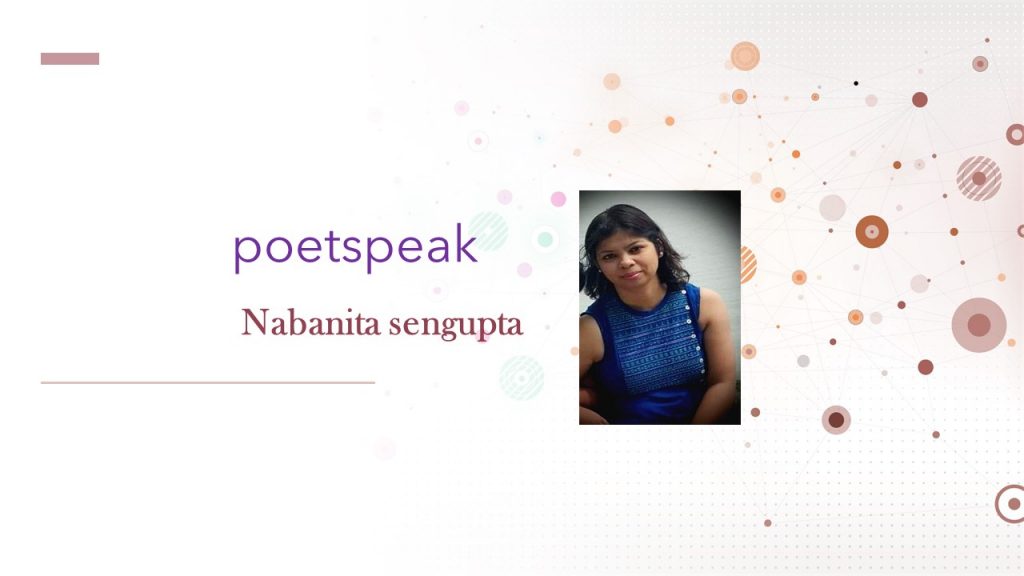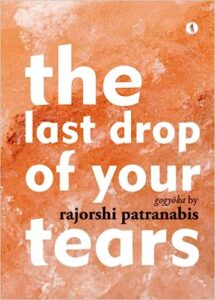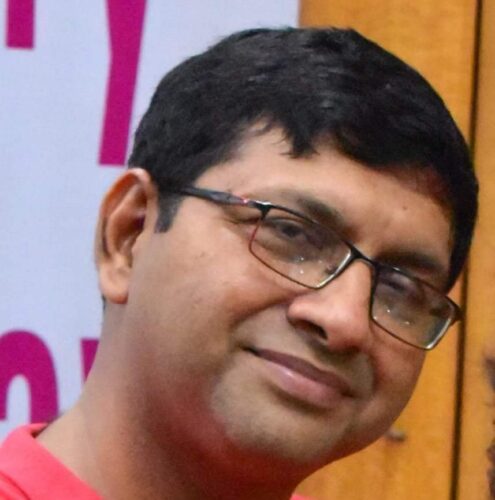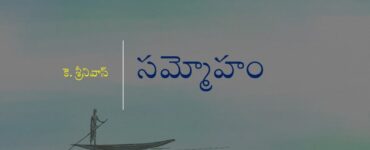Japanese short forms of poetry now occupy a significant space in the oeuvre of Indian poetry in English. The Financial Express, in an article published on 27th March 2022 mentioned a ‘Haiku revolution’ in India with Kala Ramesh at its helm. It is not just haiku, but also haibun, tanka, senryu and even haigai that has caught the imagination of Indian poets writing in English. Rajorshi Patranabis’ the last drop of your tears, a collection of gogyokha or gogyōka, published from Hawakal Publishers, adds another variety to this already rich corpus of Japanese forms. As a poet, he has been experimenting with form poetry for long with a volume of sonnet, ghazal, haiku and haibun to his credit. To add to that existing list is his latest collection of gogyōka, the last drop of your tears.
One of the interesting features of form poems is their paradoxical quality – it both limits as well as liberates. In many ways it is a reflection of life – making the most of what you can within a given and limited framework. That for me is where the challenge of form poetry lies as well. Economy of words makes these poems sharp as well as deep as the poet is expected to present his perspectives within a limited space. By definition, gogyōka means a five line poem and is often considered to be a variation of tanka. The lines can be of any length and the poems are untitled. Each line is generally a phrase with a line break at the end of each phrase. This makes gogyokha distinctive from other forms where lines are often continuation of phrases. Though the five line structure can be a limiting factor, the poems in this anthology are both evocative and dynamic in terms of contents and images.
Titles can often be deceptive. When I first held Rajorshi Patranabis’ book, the last drop of tears, I was prepared for a journey into melancholia. Yet what slowly unfolded, page after page, were nuanced feelings, gleaned from the depths of one’s soul. Mostly the poems are composed of short, staccato lines, creating sharp but deep impressions. These short verses at times painted a scene, as the lines below bring to mind a growing distance between a pair of lovers —
your silent smile
my loud whimper
sewed lips fail to speak
freedom chain itself in words
crushed juices of your drowned smells (41)
or, at times just a philosophical rumination, as in the following lines where the understanding of ‘time’ vis-à-vis its linearity is explored—
ancient was young
we grew old
present juggled past
we embraced time
hackneyed eternity (51)
It will not be wrong if this collection of poems is termed as love poems. Though they are starkly different from traditional love poetry, love remains a flowing emotion throughout the pages of this collection. But love here is melancholic. There is a pain that is born of separation, loss, misunderstanding, or just drifting away. Love, pain, death intersect in these poems and give rise to an exalted sense of pathos. But the presence of grief is not overpowering. It exists more like a silent companion that subtly nurtures the soul. The poet says,
folded eyes
pains of your embellishes
spoken naiveties
love quivers
blindfolded (48)
The poet leaves the end enigmatic and the reader is left to ponder – who or what is blindfolded here: the beloved or love itself.
On a subversive note, epiphanies also turn mundane and morose. End of life and of love conflates in such a moment of epiphany as the poet writes –
polyphonic ecstasy
mundane morose epiphany
moments survive
love dies with me
my death lives (77)
if there is pain, there is a celebration of togetherness too –
splashes pricked me
drenched
desert dry drizzles
you looked up at last
it is monsoon (42)
To read through this anthology of gogyōka is also to be bathed in a profusion of colours. The poet uses colours to paint word pictures, to depict emotions, and even to express the depth of feelings. Colours also paint the contours of relationship—
strokes of green painted her waves
starkly nude violet slashed her sunset
oiled my paint to draw her ether
she was yellow
i was white (50)
The poet associates colours with particular emotions and conditions to present a rich and vibrant palette of human love and frailty—
black weds darkness
white makes love
red slumps to unknown fever
blue crowns eternal ether
time scandals my sinful vision (31)
Reading through these punctuation-less, untitled, five-line verses give a sense of free flowing through the images. Lack of capitalization of letters add to it. The readers are not directed by the poet to pause, breath or run and are left to follow their own course. The tone is set at the very beginning with the dedication – ‘to the agonizing ecstasy – love’ and thereafter readers are left to their own interpretations of the poet’s words. Absence of a foreword or postscript also heightens this experience and sailing through these verses become an experience of finding the meaning. The reader is provoked to explore the meaning of love, of longing, and death. This kind of reader-ly freedom adds to the experience of reading poetry. Rajorshi Patranabis’ collection of gogyokha adds to the genre of Indian poetry in English not only because of its form, but also its content. Cryptic lines, open ended verses and metaphysical underpinnings make these verses one of its kind. Reading the last drop of your tears is a journey to cherish and a unique experience too.
*









Add comment